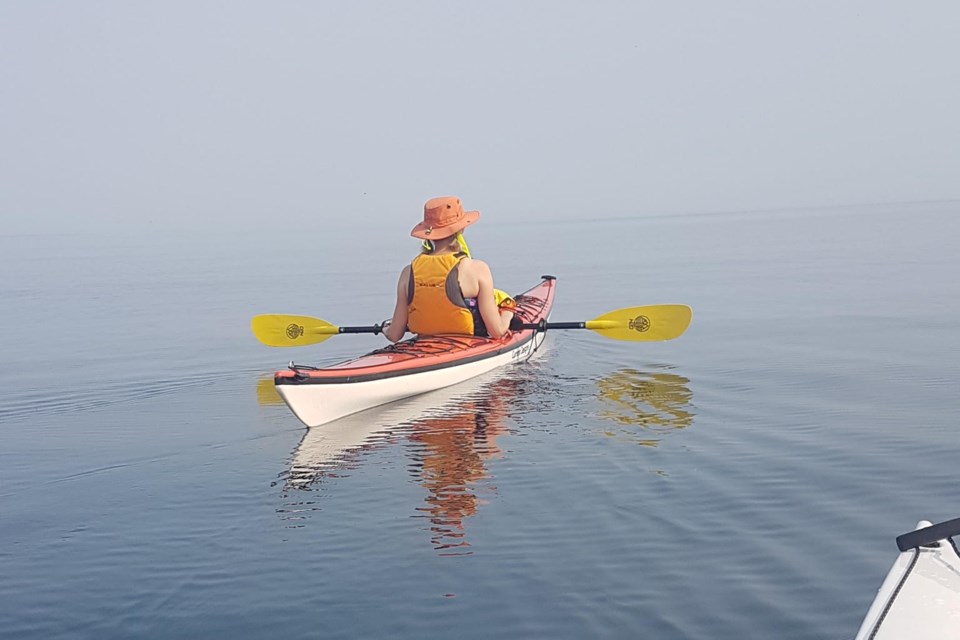Retired high school math and chemistry teacher Patty Nadon-Koro wasn't very thrilled about the idea of kayaking when first introduced to it about 30 years ago.
Not even when her parents brought home a couple of very sweet sea kayaks was she inclined to give it a shot in the 90s.
She wasn't really into it because she didn't see why she would want to switch from canoeing, something she felt was fun and a good way to get out on the water, go camping, and just enjoy nature.
As with any of the silent sports, Nadon-Koro said people have their preferences and she didn't really get into kayaking until she joined a group tour on Lake Superior with a local outfitter.
She said she was a bit intimidated by the size of the waves evident from shore that day, but said the guides taught participants what they needed to know to have a safe, enjoyable paddle and provided them with excellent equipment perfectly suited to the trip they planned.
She was hooked and jumped into kayaking with both feet, enthusiastically embracing the splash skirt and all the many changing moods of the water in the area.
"You're so close to the water and, to me, that feels safer. I feel connected to nature when I'm out in my boat," she said. "I feel like I don't just sit in my boat. I kind of wear my boat."
Besides, Nadon-Koro said, this is one of the best kayaking areas in the world.
"With Lake Superior, it's the stunning beauty. It's majestic, awesome and it's like no other place in the world. It's the clarity of the water, and all the moods of the lake as well. You can have so many different conditions all in a day's paddle. You have to be prepared for it but there's something exciting about it, too."
"I just love being able to glide along on smooth water, tuck into little coves, follow the shoreline and watch the birds," she added. "It's just a soul-nurturing experience."
Nadon-Koro prefers paddling on Lake Superior, something some paddlers find a bit intimidating,
"It's the stunning beauty. It takes my breath away every time. The geology is unique, it's beautiful," she said. "I can put my boat in just here, ten minutes from my home at Gros Cap and just paddle around that one point and feel like I'm somewhere special."
She says the secret to success in challenging paddles is to first have the proper equipment including safety gear and the right kayak for what you want to do and to be well-trained in the skills needed for safe paddling.
To that end, she's organizing a couple of training sessions for kayakers this coming summer.
Ontario Sea Kayak's Paddle Canada level one is a two-day course that moves participants beyond flat-water kayaking into more challenging trips with instruction in wet exits and re-entry solo and with a partner as well as navigation, weather and equipment choices.
The second level takes day kayakers to kayak trippers with instruction in efficient forward paddling and manoeuvring skills, kayak rolling, rescuing as well as camping and shelter skills.
"I think it's important to have the skills to paddle safely," Nadon-Koro said. "There are local instructors so I've reached out to Ray Boucher and hope to have at least the second level out at Lake Superior Park."
Nadon-Koro said she has had friends who were out in their kayaks when a wind storm came up, capsized them and they were unable to get back into their kayaks.
"It's very important to have those skills, no matter where you are kayaking. You never know when you will find yourself in a dangerous situation," she said.
She is also adamant about properly using safety equipment for the same reasons.
Kayakers are bound by the same rules as other marine craft in Ontario. While the Ontario Boating Safety Equipment standards call for a recognized personal floatation device (among other things) for each person in the kayak, Nadon-Koro strongly recommends that kayakers be wearing it properly at all times in the kayak and when getting in and out of the kayak.
When she is not kayaking, Nadon-Koro said she enjoys spending time enjoying the outdoors with her group of friends and her husband.
"Anything else, as long as it's outdoors," she said. "I love it. When I'm doing something outdoors, I'm happy and I just feel grounded."
The people in the group Nadon-Koro kayaks with share enthusiasm about being outdoors. Kayaking isn't the only thing they do together.
They also hike, camp, snowshoe, ski and canoe together.
On average, 10 to 12, people come out to most adventures.
"The people that I do these things with are remarkable. Quite remarkable!"
